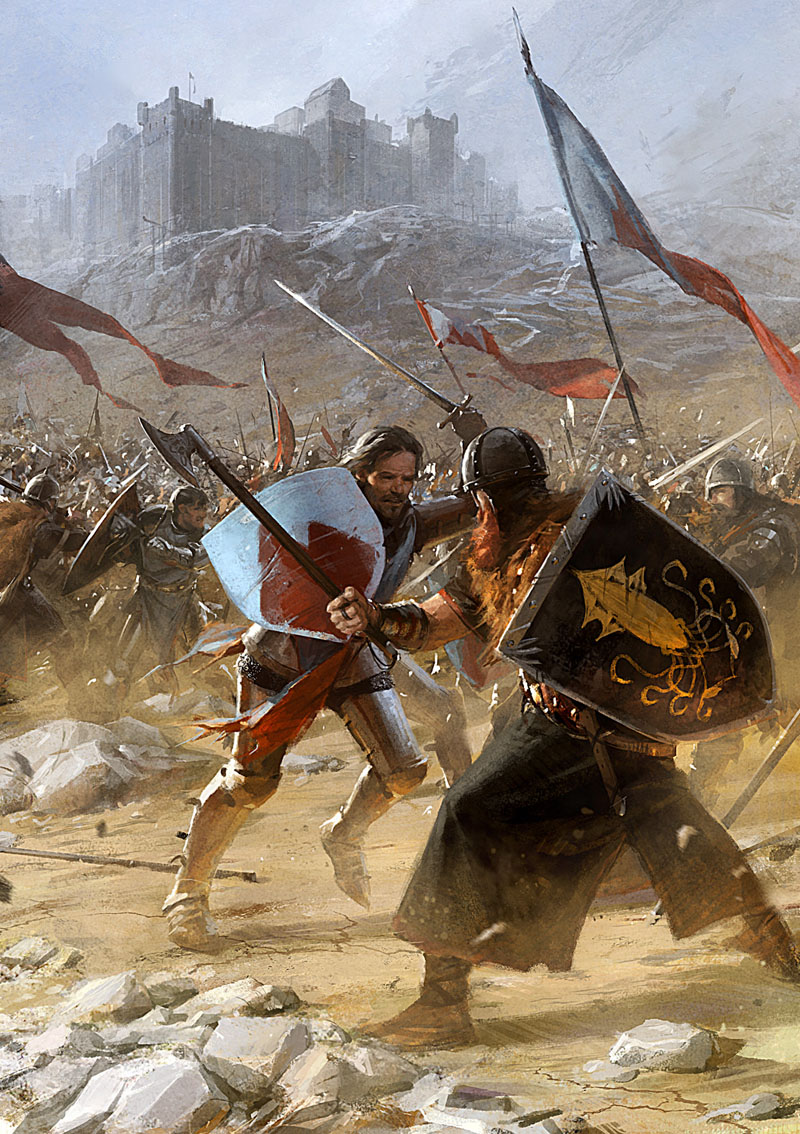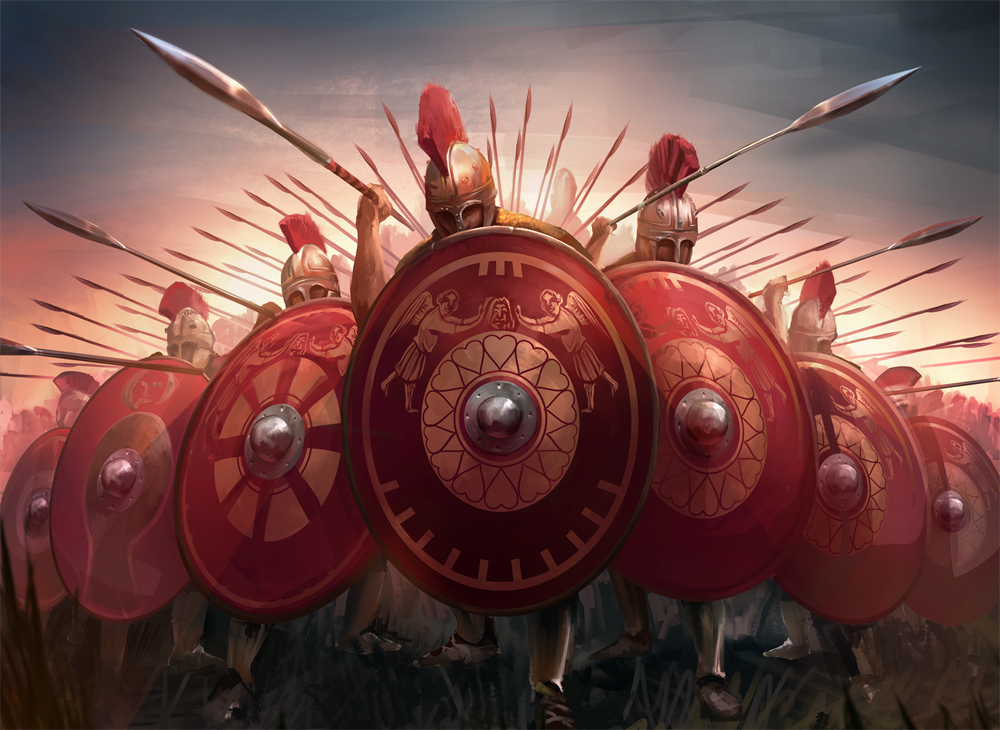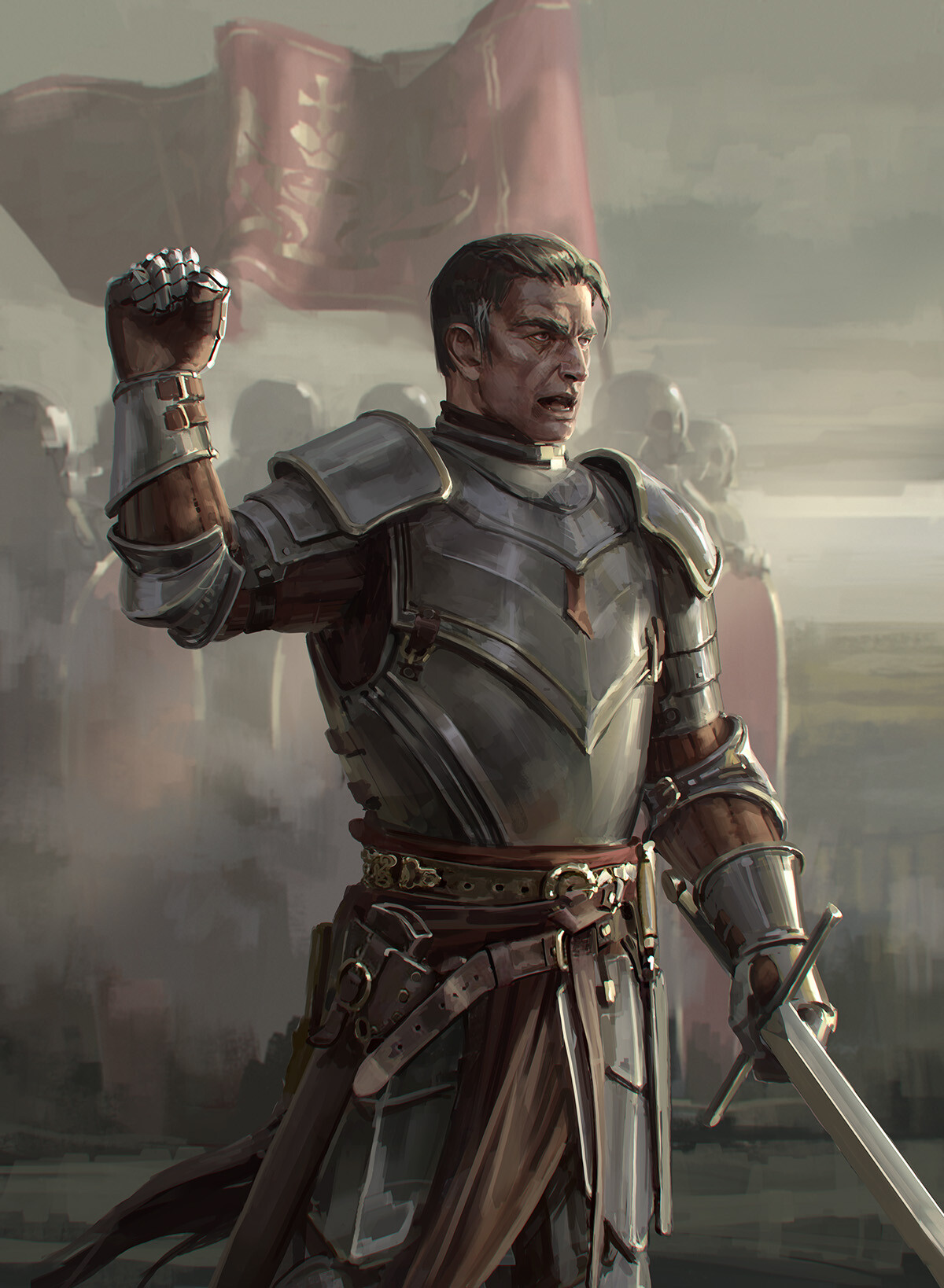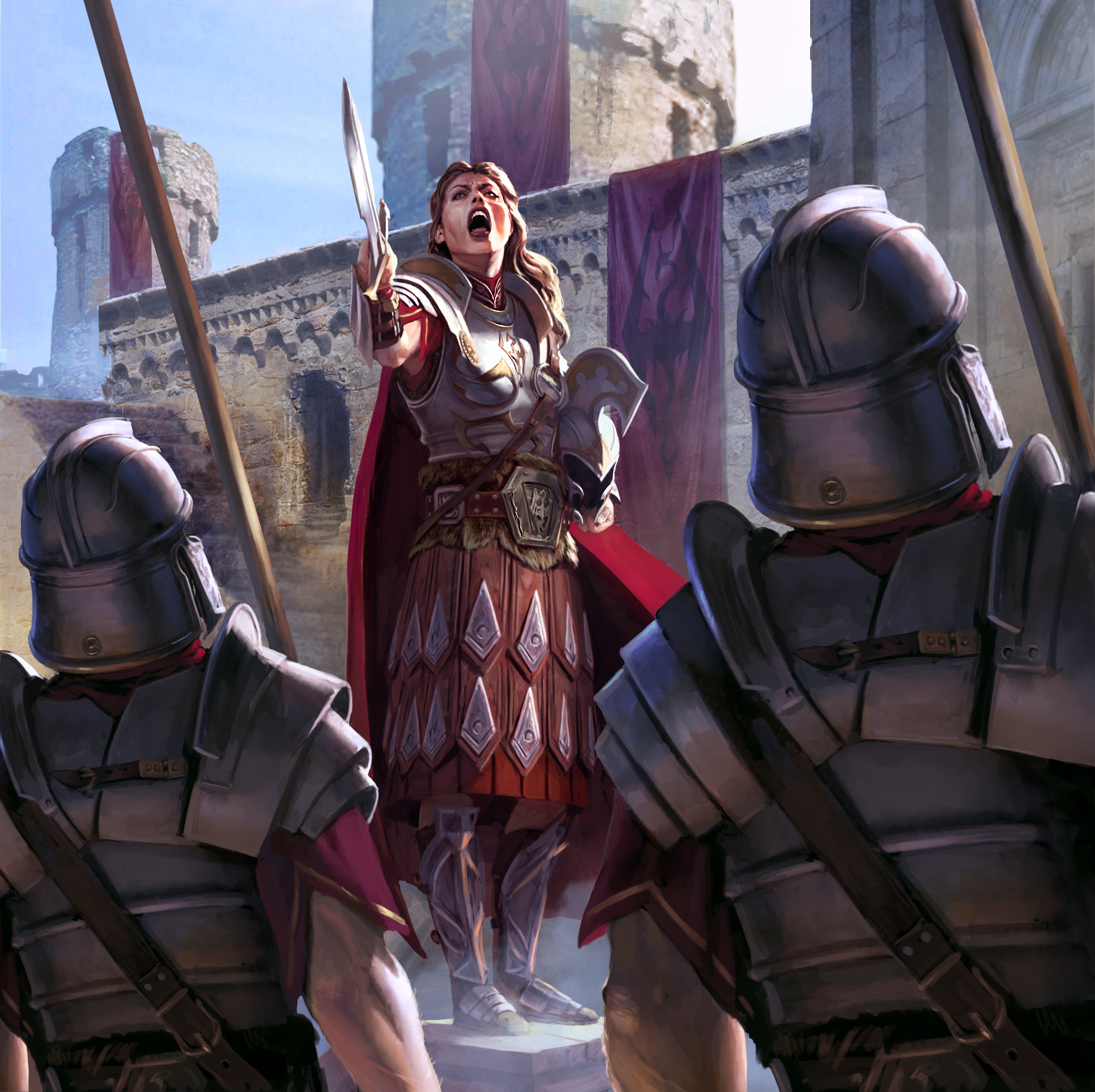



Preamble
The bottom line is, weapon users in 5e feel like they should be doing more. We've all been a fighter in the situation where we want to help distract the big monster and keep it off our squishy little wizard pal and how do we do that? Attack it more. Or when your sniper fighter needs to make sure you land one important hit on an enemy so you aim down your sights and... just attack it more. Every situation that an extra attack character encounters in combat can be resolved by just, well, hitting it more. And frankly, that's boring.
As a solution to this boring-ness, this document introduces a number of actions and attack types available to all characters but most useful to classes that gain the Extra Attack feature, similar to Grappling or Shoving. The goal here is NOT to make these classes feel stronger. I simply would like to introduce more rewarding decision making when building and playing a character that uses their action to attack on most turns.
Saving Throws
Some of the actions in this toolkit require your target to make a saving throw to resist their effects.
The saving throw DC is calculated as follows:
Strength or Dexterity modifier (your choice)
New Actions
| Name | Skill | Weapon or Armor | Resist |
|---|---|---|---|
| Aim | WIS/INT | Any | — |
| Analyze | Intelligence | Any | — |
| Feint | Deception | Any Weapon | Insight |
| Predict | Insight | Any | Deception |
| Raise Guard | Constitution | Shield or Off-hand |
─ |
| Shove Off-Balance | Athletics | Any | Acrobatics |
| Threaten | Intimidation | Any | Insight |
| Taunt | Intimidation | Any | Insight |
Aim
You use the attack action to take aim at a creature you can see. You can add your Wisdom or Intelligence modifier (your choice) to the attack and damage rolls of your next attack roll against the target before the end of your next turn. If you’re able to make multiple attacks with the Attack action, this action replaces one of them.
Analyze
When you want to deduce the combat capabilities of a creature you're fighting, you can use the Attack action to make a special attack, an analyze. If you’re able to make multiple attacks with the Attack action, this attack replaces one of them.
The target of your analyze must be a hostile creature you can see. You make an skill check determined by the Analyze Skills table (to the right) with a DC of 10 + the target's proficiency bonus. Your DM may choose a different skill if they find it more fitting to a specific creature. If you succeed, you have advantage on your next attack roll against the creature and you learn one of the following things about the target:
- AC
- An ability score of your choice
- Any resistances it has
- A saving throw modifier of your choice
- Any vulnerabilities it has
- Current HP
- CR
- Total class levels (if any)
- One of the creature's traits (the DM chooses if it has multiple)
Feint
While you are wielding a weapon, you can use the attack action to feint a target within 5 feet of you. Make a Charisma (Deception) check contested by the target’s Charisma (Deception) or Wisdom (Insight) check (the target chooses the ability to use). On a success, they flinch, they take psychic damage equal to your Charisma modifier and the next attack roll against them has advantage. Damage from this action can reduce a creature no lower than 1 hit point. If you’re able to make multiple Attacks with the attack action, this action replaces one of them.
Predict
When you want to read a creature’s next move, you can use the Attack action to make a special attack, a predict. If you’re able to make multiple attacks with the Attack action, this attack replaces one of them.
The target of your predict must be a creature you can see within 15 feet of you. You make a Wisdom (Insight) check contested by the target’s Wisdom (Insight) or Charisma (Deception) check (the target chooses the ability to use). Creatures that lack a face or head have advantage on their check. If you succeed, the target must subtract 1d6 from attack rolls targeting you and you add 1d6 to saving throws caused by it until the start of your next turn.
Raise Guard
While wielding a shield or off-hand weapon, you can use the attack action to gain temporary hit points equal to 1d6 + your Constitution modifier. All remaining temporary hit points disappear at the start of your next turn. If you’re able to make multiple Attacks with the attack action, this action replaces one of them.
Analyze Skills
| Target Creature Type | Skill |
|---|---|
| Humanoid | Intelligence (History) |
| Aberration, Construct, Dragon, Elemental, Fey, Giant, Monstrosity, Ooze | Intelligence (Arcana) |
| Celestial, Fiend, Undead | Intelligence (Religion) |
| Beast, Plant | Intelligence (Nature) |
Shove Effect: Off-balance
When you successfully shove a creature, you may choose to knock it off balance instead of knocking it prone or pushing it. If you do, the creature must subtract 1d8 from the next Strength or Dexterity saving throw it makes before the start of its turn.
Threaten
When you want to intimidate a creature in an attempt to scare it off, you can use the Attack action to make a special attack, a threaten. If you’re able to make multiple attacks with the Attack action, this attack replaces one of them.
The target of your threaten must be within 30 feet of you and able to see or hear you. You make a Charisma (Intimidation) check contested by the target’s Charisma (Intimidation) or Wisdom (Insight) check (the target chooses the ability to use). Creatures that have more than half of their hit points left have advantage on this check. If you succeed, the target hesitates, choose one effect for it to suffer until the start of your next turn:
- It must spend 2 feet of movement for every 1 foot it moves towards you
- It subtracts a d4 from its attack rolls
- It takes 1d8 psychic damage, which can't reduce it below 1 hit point
Taunt
When you want to provoke or goad a creature into focusing on you, you can use the Attack action to make a special attack, a taunt. If you’re able to make multiple attacks with the Attack action, this attack replaces one of them.
The target of your taunt must be within 30 feet of you and must be able to hear or see you. You make a Charisma (Intimidation) check contested by the target’s Charisma (Intimidation) or Wisdom (Insight) check (the target chooses the ability to use). Creatures that are one or more sizes larger than you have advantage on their check. If you succeed, the target has advantage on attack rolls against you and disadvantage on attack rolls against creatures other than you until the start of your next turn.



New Attack Types
| Name | Weapon | Effect |
|---|---|---|
| Cautious Strike | One-handed | A safer attack |
| Cleave | Slashing | Damage two targets on kill |
| Debilitating Strike | Bludgeoning | Speed reduced by 10ft. |
| Stab | Piercing | Cause the target to start bleeding |
| Pinpoint Strike | Finesse | An extra-accurate attack |
| Skirmishing Strike | Light | Increased mobility |
| Wallop | Heavy | Bonus damage when not moving much |
| Whip Trick | Whips | Pull target 5ft. or grapple target |
| Wild Strike | Two-handed | A dangerous attack that deal bonus damage |
Cautious Strike
One-handed Weapons
You attack in a way that leaves fewer opening for your opponent's to take advantage of. Before making an attack with a melee weapon that you are wielding with one hand, you may declare it to be a steadying strike. If the attack hits, you gain a +1 to your AC until the start of your next turn. The damage of this attack is halved (round up).
Cleave
Slashing Weapons
You swing wide, attempting to catch multiple enemies with your attack. Before you make a melee weapon attack that deals slashing damage as part of the attack action, you may declare it to be a cleave. Choose up to 4 creatures within 5 feet of you such that each creature is within 5 feet of the previously chosen creature. Each creature must make a Dexterity saving throw or take the damage of the attack. The damage of this attack is halved (round up).
Debilitating Strike
Bludgeoning Weapons
You attempt to knock a target off balance or damage their means of mobility. Before you make a melee weapon attack that deals bludgeoning damage as part of the attack action, you may declare it to be a debilitating strike. If the attack hits, the target's speed is reduced by 10ft until the start of your next turn. The damage of this attack is halved (round up).
Stab
Piercing Weapons
You attempt to hone in on a target's artery or other vital region. Before you make a weapon attack that deals piercing damage as part of the attack action, you may declare it to be a stab. The damage of this attack is halved (round up). On a hit, the target begins bleeding. While it is bleeding it takes 1d4 piercing damage at the start of each of its turns until it receives healing or it uses an action or legendary action to staunch the flow of blood. If your weapon's damage is magical, it's bleeding damage is considered magical as well.
Your DM may rule that creatures that don't rely on blood or other bodily liquids, such as constructs or undead, are immune to the bleeding effect of this attack.
New Attack Types (cont.)
Pinpoint Strike
Finesse Weapons
You use an opening or stroke of luck to attempt to target a particularly lethal part of your opponent's form. Before you make an attack with a finesse weapon as part of the attack action, if you have advantage on the attack you may declare it to be a pinpoint strike. You make the attack without advantage. Add your proficiency bonus to the damage of the attack.
Skirmishing Strike
Light Weapons
You take advantage of the quickness of your weapons to gain some added mobility. Before you make an attack with a light weapon as part of the attack action, you may declare it to be a skirmishing strike. Immediately before or after the attack you may move 5ft. Opportunity attacks provoked by this movement have disadvantage. The damage of this attack is halved (round up).
Wallop
Heavy Weapons
You put a chunk of your momentum into your devastating swings. Before you make an attack with a heavy weapon as part of the attack action, you may declare it to be a wallop. You add your proficiency bonus to the damage of this attack. After you make a wallop attack, your speed is halved until the end of your next turn.
Whip Trick
Whips
You attempt to wrap up or otherwise hinder a creature with a whip your wielding. Before you make a melee attack with a whip as part of the attack action, you may declare it to be a whip trick. Instead of making an attack roll, the target must make a Strength saving throw. On a failure, the target takes the damage of the attack and if it is medium or smaller, you grapple it (Escape DC = Martial Save DC) or pull it 5 feet towards you (your choice). The damage of this attack is halved (round up).
Wild Strike
Two-handed Weapons
You forgo covering your openings in favor of landing an extra vicious blow. Before making an attack with a melee weapon that you are wielding with two hands, you may declare it to be a wild strike. If the attack hits, you take a -2 penalty to your AC until the start of your next turn. Add your proficiency bonus to the damage of the attack.
New Feats
| Feat | Related Attacks/Actions |
|---|---|
| Bulwark Training | Raise Guard, Taunt, Threaten |
| Duelist Training | Feint, Predict, Keen attack, Step attack |
| Tactician Training | Aim, Analyze, Predict |
| Weapon Master Training | New Attack Types |
Bulwark Training
You've trained to serve as a potent distraction in battle:
- The die used for your Raise Guard action increases to 1d10
- If you're wielding a shield, you can use a bonus action to take the Taunt or Threaten action
Duelist Training
You've trained to take advantage of a lightweight and predictive fighting style:
- The movement of your skirmishing strikes increases to 10 feet
- When you are wielding a melee weapon in one hand and no other weapons, you can use a bonus action to take the Feint or Predict action
Tactician Training
You've trained to approach fights by analyzing your opponents capabilities and outsmarting them:
- After you make an attack on your turn, you can use a bonus action to take the Aim, Analyze, or Predict action against the target
Weapon Master Training
Prerequisite: Proficiency with a martial weapon
You've trained with a vast multitude of weapons to master all of their unique properties:
- Increase your Strength or Dexterity by 1, to a maximum of 20.
- The damage of your Cautious Strikes, Cleaves, Debilitating Strikes, Stabs, Pinpoint Strikes, Skirmishing Strikes, and Whip Tricks is no longer halved.
- Your Wallops reduce your speed by 10 feet instead of halving it.
- The AC penalty of your Wild Strikes is reduced to -1.



Fighter Feature:
Superior Combatant
Superior Combatant
| Level | Superiority Dice | Dice Type | Maneuvers Known |
|---|---|---|---|
| 1st | ─ | ─ | ─ |
| 2nd | 2 | 1d4 | 3 |
| 5th | 4 | 1d4 | 4 |
| 8th | 5 | 1d4 | 5 |
| 11th | 5 | 1d6 | 6 |
| 14th | 6 | 1d6 | 7 |
| 17th | 8 | 1d10 | 8 |
| 20th | 10 | 1d10 | 9 |
Superior Combatant
2nd-level Fighter optional feature, which replaces the Action Surge feature
Starting at 2nd level, you learn maneuvers that are fueled by special dice called superiority dice.
Maneuvers. You learn three maneuvers of your choice from among those available to the Battle Master archetype. Many maneuvers enhance an attack in some way. You can use only one maneuver per attack.
You learn an additional maneuvers as you level up, as shown in the Maneuvers Known column of the Superior Combatant table.
Superiority Dice. You gain one superiority die, which is a d4. A superiority die is expended when you use it. You regain all of your expended superiority dice when you finish a short or long rest.
You gain additional superiority dice as you level up, as shown in the Superiority Dice column of the Superior Combatant table.
Superiority Die Improvement. Your superiority dice improve as you gain fighter levels, as shown in the Dice Type column of the Superior Combatant table.
The superiority dice you gain from this feature cannot have their dice type changed by other features, such as the Battle Master archetype. However, this feature can cause other superiority dice to change in type, such as the superiority die granted by the Martial Adept feat.
Saving Throws. Some of your maneuvers require your target to make a saving throw to resist the maneuver's effects. The saving throw DC is calculated as follows:
Strength or Dexterity modifier (your choice)
New Battle Master Maneuvers
Brawler's Takedown
When you attempt to Grapple or Shove a creature, you can expend a superiority die and add the superiority die to your Strength (Athletics) check.
Calculated Attack
Immediately before you make an attack roll on your turn you can expend a superiority die to attempt to find a flaw in the target's defenses. Make a Intelligence (Investigation) check against the target's AC. On a success, you have advantage on this attack. Regardless of the result of your Intelligence (Investigation) check, you add the superiority die to the attack's damage roll.
Dropkick
When you hit a creature with an unarmed strike, you can expend a superiority die to attempt to perform a flying kick. You add the superiority die to the attack's damage roll, and if the target is Large or smaller, it must make a Strength saving throw. On a failed save, you knock the target prone and push it up to 15 feet away from you.
De-escalate
On your turn, you can use an action and expend one superiority die to attempt to convince a creature that you mean it no harm. Choose a hostile creature that can see or hear you and force it to make a Wisdom saving throw with a DC of 8 + your proficiency bonus + your Charisma modifier. On a failure, you can make it indifferent about creatures of your choice that it is hostile toward for 1 minute. This indifference ends if the target is attacked or harmed by a spell or if it witnesses any of its friends being harmed. When this effect ends, the creature becomes hostile again, unless the DM rules otherwise.
First Aid
As a bonus action on your turn, you can touch a creature and expend a superiority die to have them regain a number of hit points equal to the superiority die + your Wisdom modifier.
Xpert Advice: Spells and Maneuvers
Some of the new Battle Master maneuvers presented here require a character to be able to cast specific types of spells. Getting both spells and maneuvers on a Battle Master can be done using official content via feats such as Magic Initiate or by multiclassing.
Alternatively, using unofficial options like the Superior Combatant optional feature from this document in tandem with the Eldritch Knight fighter subclass can make learning these maneuvers a smoother process.
Want More Maneuvers?
11 new maneuvers aren't enough? Say no more! Unlock all 32 New Battle Master Maneuvers on DriveThruRPG. Links in the comments and on my profile page!
Flame Blade
Prerequisite: The ability to cast at least one spell that deals fire damage
When you hit a creature with a weapon attack, you can expend one superiority die to cause a surge of arcane fire to engulf your weapon or ammunition. You add the superiority die + your spellcasting ability modifier to the attack's damage roll as fire damage.
Heroic Leap
When you attempt a long or high jump on your turn you can expend a superiority die and temporarily add double the number rolled to your Strength score until you determine the result of your jump. You can temporarily increase your Strength score above 20 using this maneuver.
Natural Awareness
When you make an Intelligence (Nature), a Wisdom (Animal Handling), or a Wisdom (Survival) check, you can expend one superiority die and add the superiority die to the ability check.
Shocking Blade
Prerequisite: The ability to cast at least one spell that deals lightning damage
When you hit a creature with a weapon attack, you can expend one superiority die to cause your weapon or ammunition to become wreathed with arcing lightning. You add the superiority die to the attack's damage roll as lightning damage, and the target can't take reactions until the start of its next turn.
Snipe
Immediately before you make a ranged weapon attack, you can expend a superiority die to double the normal and long range of your weapon for the attack. On a hit, you add the superiority die to the attack's damage roll.
Vicious Attack
When you hit a creature with a weapon attack, you can expend one superiority die to hone your strike in on the target's vitals. Roll your superiority die twice, adding only the higher result to the attack's damage.
Superior Combatant Balance Notes
Action Surge Calculations
We'll assume that:
- Fighter starts with +4 bonus to damage. This represents a combination of ability modifier & fighting style.
- For levels 1-16, the fighter gets +1 bonus to damage each time that they get a feat to represent ASIs and damage-increasing feats during the levels before the fighter has everything they need.
- Fighter uses a d8 damage weapon: average of 4.5 damage
- The fighter has a 60% chance to hit
Even if this isn't perfect, this is a good enough estimate for the purposes of balancing this optional feature.
Average attack damage at each level:
- Levels 1-3: 4.5(weapon dice) + 4(bonus to damage) = 8.5 x 0.60(chance to hit) = 5.1
- Levels 4-5: 4.5(weapon dice) + 5(bonus to damage) = 9.5 x 0.60(chance to hit) = 5.7
- Levels 6-7: 4.5(weapon dice) + 6(bonus to damage) = 10.5 x 0.60(chance to hit) = 6.3
- Levels 8-11: 4.5(weapon dice) + 7(bonus to damage) = 11.5 x 0.60(chance to hit) = 6.9
- Levels 12-13: 4.5(weapon dice) + 8(bonus to damage) = 12.5 x 0.60(chance to hit) = 7.5
- Levels 14-15: 4.5(weapon dice) + 9(bonus to damage) = 13.5 x 0.60(chance to hit) = 8.1
- Levels 16-20: 4.5(weapon dice) + 10(bonus to damage) = 14.5 x 0.60(chance to hit) = 8.7
When Action surge is used to attack:
- Levels 2-4: grants 1 extra attack per short rest(1 use x 1 attack)
- Levels 5-10: grants 2 extra attacks per short rest(1 use x 2 attacks)
- Levels 11-16: grants 3 extra attacks per short rest(1 use x 3 attacks)
- Level 17-19: grants 6 extra attacks per short rest(2 uses x 3 attacks)
- Level 20: grants 8 extra attacks per short rest(2 uses x 4 attacks)
Damage from action surge (short rest):
- Levels 2-3: one extra attack = 1 x 5.1 = 5.1 damage
- level 4: one extra attack = 1 x 5.7 = 5.7 damage
- Levels 5: two extra attacks = 2 x 5.7 = 11.4 damage
- Levels 6-7: two extra attacks = 2 x 6.3 = 12.6 damage
- Levels 8-10: two extra attacks = 2 x 6.9 = 13.8 damage
- Level 11: three extra attacks = 3 x 6.9 = 20.7 damage
- Levels 12-13: three extra attacks = 3 x 7.5 = 22.5 damage
- levels 14-15: three extra attacks = 3 x 8.1 = 24.3 damage
- level 16: three extra attacks = 3 x 8.7 = 26.1 damage
- Level 17-19: six extra attacks = 6 x 8.7 = 52.2 damage
- Level 20: eight extra attacks = 8 x 8.7 = 69.6 damage
Superior Combatant Calculations
Damage from Superior Combatant (short rest):
- levels 2-4: 2x 1d4 = 2 x 2.5 = 5 damage
- levels 5-7: 4x 1d4 = 4 x 2.5 = 10 damage
- levels 8-10: 5x 1d4 = 5 x 2.5 = 12.5 damage
- levels 11-13: 5x 1d6 = 5 x 3.5 = 17.5 damage
- levels 14-16: 6x 1d6 = 6 x 3.5 = 21 damage
- levels 17-19: 8x 1d10 = 8 x 5.5 = 44 damage
- levels 14-16: 10x 1d10 = 10 x 5.5 = 55 damage
Comparison
| Level | Superior Combatant | Action Surge |
|---|---|---|
| 2 | 5 | 5.1 |
| 3 | 5 | 5.1 |
| 4 | 5 | 5.7 |
| 5 | 10 | 11.4 |
| 6 | 10 | 12.6 |
| 7 | 10 | 12.6 |
| 8 | 12.5 | 13.8 |
| 9 | 12.5 | 13.8 |
| 10 | 12.5 | 13.8 |
| 11 | 17.5 | 20.7 |
| 12 | 17.5 | 22.5 |
| 13 | 17.5 | 22.5 |
| 14 | 21 | 24.3 |
| 15 | 21 | 24.3 |
| 16 | 21 | 26.1 |
| 17 | 44 | 52.2 |
| 18 | 44 | 52.2 |
| 19 | 44 | 52.2 |
| 20 | 55 | 69.6 |
Conclusion
As we can see from the comparison chart, the "damage" of Superior Combatant purposefully lags behind the total damage of Action Surge. The logic behind this is that most battlemaster maneuvers allow a character to add both a useful effect and damage to an attack. Meanwhile the best use for Action Surge is (usually) to simply make more attacks, which only adds damage with no useful effects. The difference in damage is made up by the utility & versatility of effects like tripping, pushing, lunging, etc.

Martial Toolkit
Become the master of martial combat you were meant to be with this optional set of rules designed to introduce versatility and tactical combat to Dungeons and Dragons 5th edition.
Version Info
This is Version 4.6 of the Martial Toolkit
Art Credits
- Front Cover: Invasion by ManiakS
- Page 2: Egmund by Anton Nazarenko
- Page 4: Scholae Palatinae by PFPictor
- Page 6: Card illustration - Men of War by Daria Rashev
- Back Cover: Elder Scrolls Online: Mentor of the Watch by DiegoGisbertLlorens
Enjoy My Work?
Find more of my content here
Visit my DriveThruRPG page to support the creation of more content like this and gain access to premium content.
System Reference Document 5.1
This work includes material taken from the System Reference Document ("SRD 5.1") by Wizards of the Coast LLC, available at https://media.wizards.com/2023/downloads/
dnd/SRD_CC_v5.1.pdf